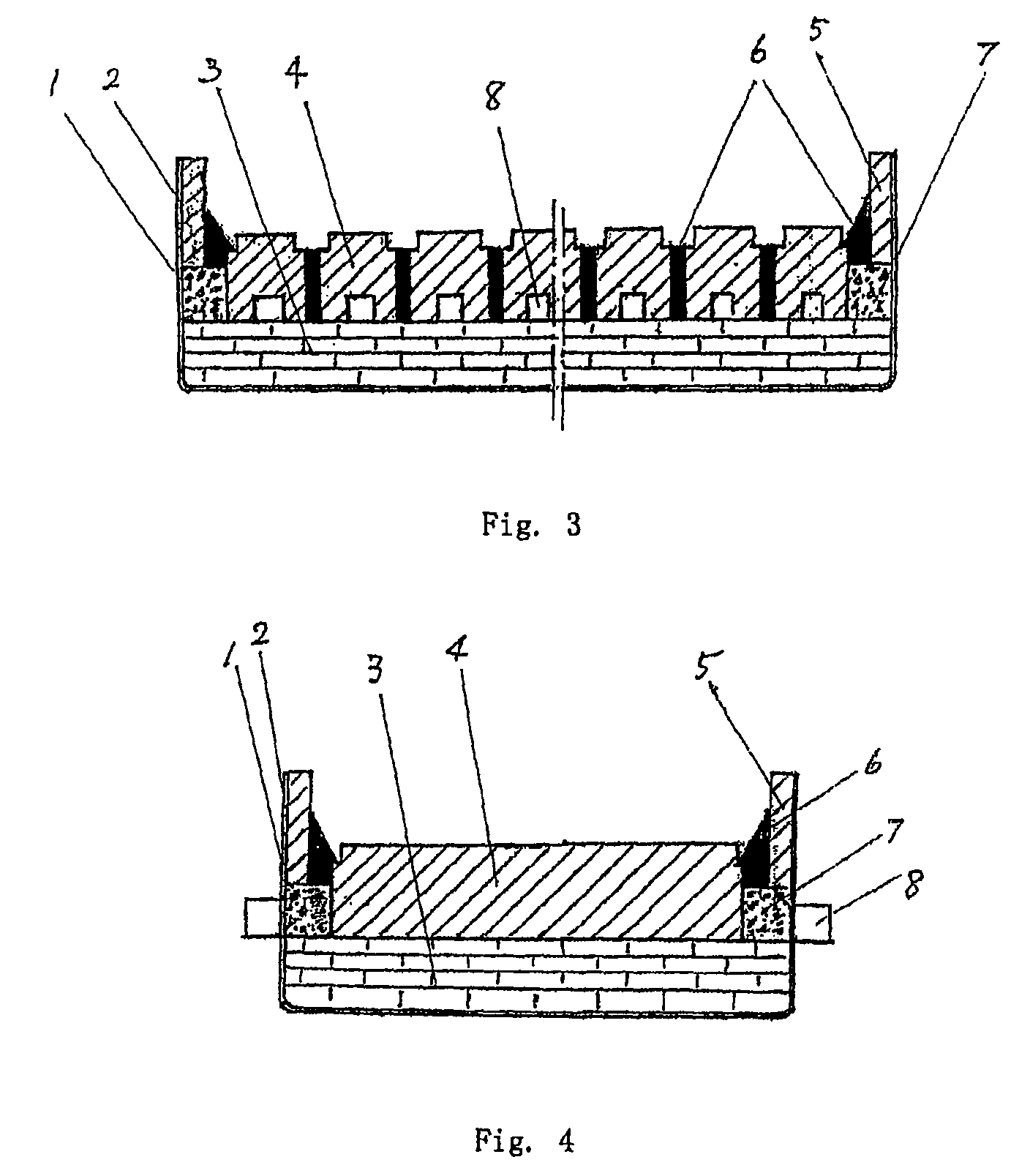Aluminum electrolytic cells having heterotypic structured cathode carbon blocks
a heterotypic structure and electrolysis cell technology, applied in the field of aluminum electrolysis, can solve the problems of reducing the current efficiency, affecting the electrolysis cell, and increasing the power consumption of the direct current production of aluminum electrolysis, so as to reduce the molten aluminum loss, reduce the velocity of the flow and fluctuation of the level of cathodal molten aluminum, and increase the stability of the surface of molten aluminum.
- Summary
- Abstract
- Description
- Claims
- Application Information
AI Technical Summary
Benefits of technology
Problems solved by technology
Method used
Image
Examples
Embodiment Construction
[0045]As shown in FIG. 1, an aluminum electrolytic cell having profiled cathode carbon blocks structures has a coverless rectangular case structure. The outside thereof comprises a steel cell case 1, and the steel cell case 1 is lined with an asbestos board 2. Refractory materials and heat insulating materials 3 are provided on the asbestos board 2 lining within the cell case 1, and cathode carbon blocks at cell bottom 4, each of which the upper surface includes protruding portions, are provided on the refractory materials and the heat insulating materials 3, wherein the profiled cathode carbon blocks 4 with the upper surface thereof having protruding portions are made from anthracites or artificial graphite crumbs or the compound thereof Alternatively, such cathode carbon blocks 4 with the upper surface thereof having protruding portions can be made of graphitized or semi-graphitized carbon blocks. The protruding portions of the profiled cathode carbon blocks 4 each has a width les...
PUM
| Property | Measurement | Unit |
|---|---|---|
| height | aaaaa | aaaaa |
| temperature | aaaaa | aaaaa |
| distance | aaaaa | aaaaa |
Abstract
Description
Claims
Application Information
 Login to View More
Login to View More - R&D
- Intellectual Property
- Life Sciences
- Materials
- Tech Scout
- Unparalleled Data Quality
- Higher Quality Content
- 60% Fewer Hallucinations
Browse by: Latest US Patents, China's latest patents, Technical Efficacy Thesaurus, Application Domain, Technology Topic, Popular Technical Reports.
© 2025 PatSnap. All rights reserved.Legal|Privacy policy|Modern Slavery Act Transparency Statement|Sitemap|About US| Contact US: help@patsnap.com



